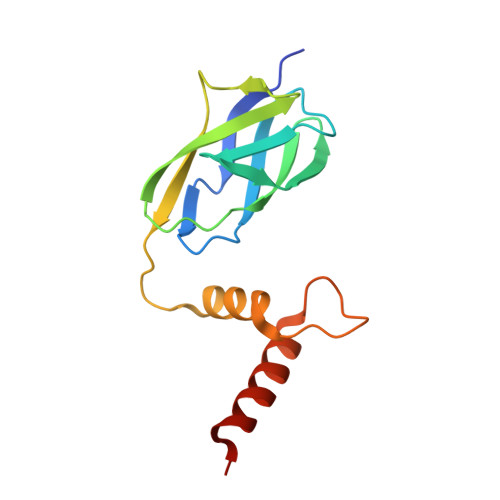Structural Determination of Functional Domains in Early B-cell Factor (EBF) Family of Transcription Factors Reveals Similarities to Rel DNA-binding Proteins and a Novel Dimerization Motif.
Siponen, M.I., Wisniewska, M., Lehtio, L., Johansson, I., Svensson, L., Raszewski, G., Nilsson, L., Sigvardsson, M., Berglund, H.(2010) J Biological Chem 285: 25875-25879
- PubMed: 20592035
- DOI: https://doi.org/10.1074/jbc.C110.150482
- Primary Citation of Related Structures:
3LYR, 3MQI, 3MUJ, 3N50 - PubMed Abstract:
The early B-cell factor (EBF) transcription factors are central regulators of development in several organs and tissues. This protein family shows low sequence similarity to other protein families, which is why structural information for the functional domains of these proteins is crucial to understand their biochemical features. We have used a modular approach to determine the crystal structures of the structured domains in the EBF family. The DNA binding domain reveals a striking resemblance to the DNA binding domains of the Rel homology superfamily of transcription factors but contains a unique zinc binding structure, termed zinc knuckle. Further the EBF proteins contain an IPT/TIG domain and an atypical helix-loop-helix domain with a novel type of dimerization motif. The data presented here provide insights into unique structural features of the EBF proteins and open possibilities for detailed molecular investigations of this important transcription factor family.
Organizational Affiliation:
Department of Medical Biochemistry and Biophysics, Karolinska Institutet, Stockholm, Sweden.


















